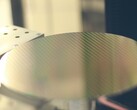Taiwan Semiconductor Manufacturing Co. (TSMC) plans to open or equip nine advanced plants in 2025—eight wafer fabs and one chip-on-wafer-on-substrate (CoWoS) packaging line—marking the most aggressive single-year expansion in the company’s history. Senior executives outlined the roadmap during the firm’s 2025 technology symposium, noting that the yearly build rate has tripled since the 2017-2020 average of three fabs per year.
Capital expenditure will rise accordingly. Management has set a budget of $38 billion to $42 billion for 2025, up from $29.2 billion in 2024 and surpassing the previous $35.2 billion record set in 2022. The figure reflects both the volume of simultaneous projects and the rising price of lithography equipment; every new low-numerical-aperture EUV scanner costs roughly $235 million, while forthcoming high-NA tools are expected to fetch about $380 million each.
In Taiwan, TSMC is ramping 2nm production at Fabs 20 and 22 and preparing Fab 25 in Taichung for post-2nm nodes. Kaohsiung is slated for five additional facilities covering 2nm, A16 (1.6nm-class), and even more advanced processes. Overseas, the company has finished construction of the second phase of its Arizona Fab 21, started the third phase, and is outfitting a second plant in Kumamoto, Japan. A new complex in Dresden, Germany (Fab 24) rounds out the list.
Management links the surge in investments to persistent demand from high-performance computing and artificial-intelligence. Large AI accelerators occupy more silicon area than mainstream processors, forcing customers to order more wafers per design. The same demand wave has strained advanced packaging, prompting TSMC to forecast an 80 percent compound annual growth rate in CoWoS capacity from 2022 through 2025, well above last year’s 60 percent target.
Whether the schedule holds will depend on construction milestones, tool deliveries, and customer adoption of next-generation nodes such as N2P and A16. Still, the 2025 blueprint underscores TSMC’s intent to protect its foundry lead by matching increased device demand with an equally increased manufacturing scale.
Source(s)
Taipei Times (in English)




















